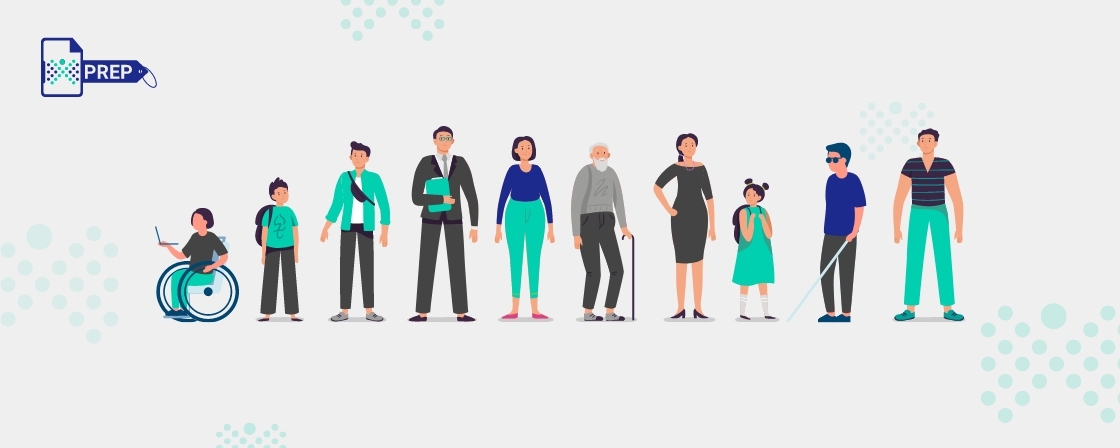Assistive technology has played a significant role in improving the lives of people with disabilities through accessible software, hardware, content, and architecture. Reports suggest that there are nearly one billion people in the world living with disabilities, indicating the growing need for assistive technology to help them navigate through their daily lives. However, assistive technologies not only help people with disabilities but are extensively used by people without disabilities for convenience.
Accessibility in product design helps everyone
Dr K. Sriram, our disability advisor, recently explained how assistive technology is not only a boon for people with disabilities but for all of humanity in an interview with SPRUZUP GLOBAL – a content marketing and accessibility company that brings a unique business value to inclusion. He explains how assistive technology has become a staple in mainstream product design and has enriched the lives of people with and without disabilities.
Although governments mandate businesses to design products with inclusivity as a core principle, it must be actively incorporated into services and products because accessibility features have proven beneficial and practical for everyone. Our daily communication and structural elements have been influenced by ideas initially designed for people with disabilities.
Inclusive designing has revolutionized communication and infrastructure
The ADA guidelines necessitate public places to provide ramps to enable easy access into buildings for people on wheelchairs. However, these ramps are now part of the normal fabric of the malls, used by everyone, not just those in wheelchairs. Similarly, SMS texting was invented as a way for people with hearing impairment to communicate with one another without speaking, and now it has transformed global communications!
Assistive infrastructure and technology not only help people with disabilities but also makes the life of people without disabilities better through good product design. Let’s look at a few examples:
Voice control
Features such as Siri, Google Assistant, and Alexa were intended to help people with visual impairments navigate their devices using their voices. Voice control today is designed not just for helping people with disabilities but also a core feature of smart homes where anyone, at their comfort, can pull up information or content without any physical movement! There are continuous improvements in products that incorporate voice control in their core design to optimize user experiences, identifying different accents and languages while also universally making people’s lives better.
- Text-to-speech
Text-to-speech (TTS) or screen reading helps visually impaired people understand what is written on their devices through speech. AI tools such as TTS have made using devices a lot easier. For people without disabilities, especially writers, TTS is universally used to read back articles, essays, or even an email to catch minor errors in their content. - Automatic doors
Automatic sliding doors have become a must-have for any building, business, or otherwise, allowing easy access to everyone. Restaurants use automatic doors to help waiters and waitresses easily carry food in and out of the kitchen. Beyond convenience, automatic doors help reduce energy consumption which directly impacts the reduction in heating costs.
- Closed Captions
Although initially designed for people with hearing disabilities, closed captions have revolutionized how we watch movies and television shows. For non-fluent speakers, closed captions help connect with the content they are watching from anywhere in the world.
Using AI for better experiences for everyone
“The principles of good human-to-computer interface design are simplicity, support, clarity, encouragement, satisfaction, accessibility, versatility, and personalization. While it’s essential to heed these, it’s also important to empathize with and inspire your audience, so they feel you’re treating them less like a faceless user and more like a human being.” – Sharon Lee.
Good product design should always be at the heart of assistive technology. Any product or service should value inclusivity and come from a place of empathy and extend to improving the quality of life universally. The use of AI in accessibility makes it universal in the best sense and removes bias in providing solutions for people with disabilities — cognitive, physical, or otherwise. With the advent of remediation through artificial intelligence (AI), a new world of accessible education has been unlocked for people with and without disabilities.
Conclusion
Continual Engine’s flagship suite of AI-enabled accessibility products – Invicta and PREP, is transforming the process of making digital content accessible. Our collaborative platform empowers those working on creating accessible content to leverage advanced Artificial Intelligence algorithms to generate accessible content faster, more consistently, and at significantly lower costs.
Invicta generates high-quality alt-text to be used seamlessly by screen readers. Its alt-text writing service uses highly sophisticated AI models that allow the auto-generation of descriptions for complex images, including STEM images, which are then reviewed and edited by our panel of highly qualified SMEs (Subject Matter Experts). PREP is an industry-leading, artificial intelligence-driven document remediation solution that offers unparalleled quality, accuracy, and scalability. This allows improved accessibility to digital content for people with disabilities who rely on screen readers.
While appropriate alt-text descriptions and accurately tagged PDF documents are crucial for delivering similar reading experiences to people with visual impairments and specific learning disabilities, screen readers are used extensively by people without disabilities for multitasking and convenience, making this assistive technology universal. It is a common misconception that accessibility is designed solely for people with disabilities. Everyone benefits from accessible content because they can use your digital content with fewer constraints.

